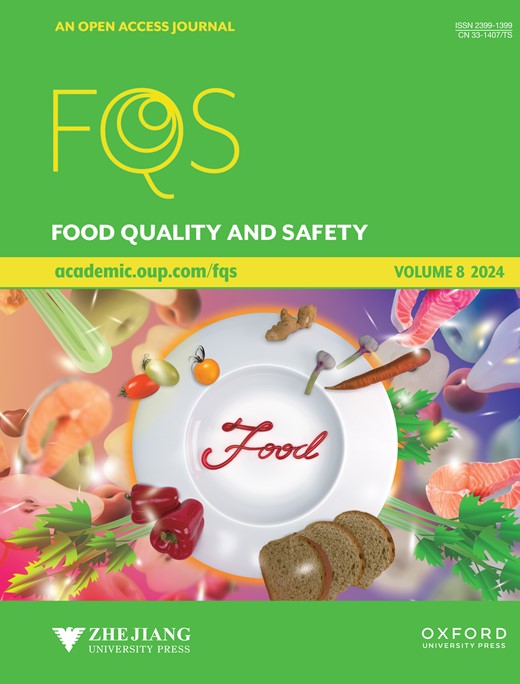转录组综合分析揭示了白菜(Brassica rapa subsp)叶片延迟衰老的可能机制。褪黑素治疗后,中华黄栌(Chinensis)
IF 3
3区 农林科学
Q2 FOOD SCIENCE & TECHNOLOGY
引用次数: 1
摘要
褪黑激素(MT)是一种低分子量化合物,在植物中具有多种生物功能。众所周知,它可以延缓各种水果和蔬菜的衰老。本研究表明MT(100μmol L-1)可延缓20℃贮藏小白菜的衰老。与未处理的小白菜相比,MT处理组共鉴定出1121个差异表达基因(DEG)。DEGs分析表明,MT诱导的衰老延迟涉及叶绿素代谢基因表达的减少以及激素相关基因和叶片衰老相关转录因子表达的调节。MT降低了叶绿素代谢相关酶Mg脱helatase、脱叶绿素酶和pheide a加氧酶的活性,降低了脱落酸和茉莉酸的浓度,并增加了生长素的浓度。MT延缓衰老相关转录因子BcNAC41和BcNAC87对烟草叶片衰老的影响。本研究深入了解了MT诱导小白菜采后衰老延迟的分子机制,并证实了其作为一种保鲜技术的潜力。本文章由计算机程序翻译,如有差异,请以英文原文为准。
Integrative analysis of transcriptome reveals the possible mechanism of delayed leaf senescence in pak choi (Brassica rapa subsp. chinensis) following melatonin treatment
Melatonin (MT) is a low molecular weight compound with a wide variety of biological functions in plants. It is known to delay senescence in various fruits and vegetables. This study demonstrates that MT (100 μmol L -1) delayed the senescence of pak choi stored at 20 °C. A total of 1121 differentially expressed genes (DEGs) were identified in a MT-treated group in comparison to untreated pak choi. Analysis of DEGs revealed that MT-induced delay in senescence involved reduction in expression of chlorophyll metabolism genes and regulation of expression of hormone-related genes and leaf senescence-related transcription factors. MT decreased the activity of chlorophyll metabolism-related enzymes Mg-dechelatase, pheophytinase, and pheide a oxygenase, decreased the concentrations of abscisic acid and jasmonic acid, and increased auxin concentration. MT delayed the impact of senescence-related transcription factors BcNAC41 and BcNAC87 on tobacco leaf senescence. This study provides an insight into the molecular mechanisms of MT-induced delay of postharvest senescence in pak choi and confirms its potential as a preservation technique.
求助全文
通过发布文献求助,成功后即可免费获取论文全文。
去求助
来源期刊

Food Quality and Safety
FOOD SCIENCE & TECHNOLOGY-
CiteScore
7.20
自引率
1.80%
发文量
31
审稿时长
5 weeks
期刊介绍:
Food quality and safety are the main targets of investigation in food production. Therefore, reliable paths to detect, identify, quantify, characterize and monitor quality and safety issues occurring in food are of great interest.
Food Quality and Safety is an open access, international, peer-reviewed journal providing a platform to highlight emerging and innovative science and technology in the agro-food field, publishing up-to-date research in the areas of food quality and safety, food nutrition and human health. It promotes food and health equity which will consequently promote public health and combat diseases.
The journal is an effective channel of communication between food scientists, nutritionists, public health professionals, food producers, food marketers, policy makers, governmental and non-governmental agencies, and others concerned with the food safety, nutrition and public health dimensions.
The journal accepts original research articles, review papers, technical reports, case studies, conference reports, and book reviews articles.
 求助内容:
求助内容: 应助结果提醒方式:
应助结果提醒方式:


